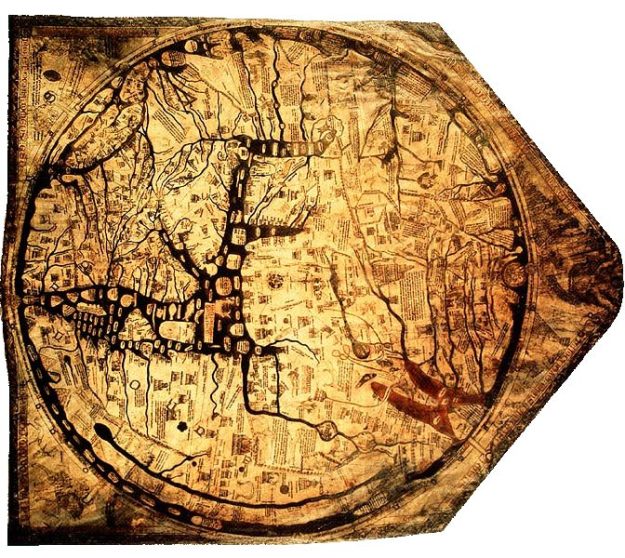Fortified by a good night’s sleep and a hearty full English, we retrieved our bikes from the bike store and prepared for the next leg of the journey. A group of retired Glaswegian policemen, whom we had briefly come across previously on the ride, were in the car park and we had a brief conversation with them. Well I say conversation – it consisted of them talking and me hopefully grunting, in a positive manner, at the appropriate moment as I couldn’t understand very much of what they were saying due to their accents! Other members of the team told me later that they were expressing their admiration for someone of my age doing LEJOG, which was rather gratifying. I resolved that the next time we bumped into them on the ride (they were following the same route as us) I would smile as well as grunt.
As we left Monmouth, I vividly remembered that on the 2013 LEJOG Ollie had led us out of the town, trusty map in hand. We missed the turning we should have taken and instead ended up on a horrendously busy dual carriageway, actually we should have been heading for Hereford on the A266, a road with much less traffic. On that occasion, I had looked at the map before we set off and was more or less sure we had missed the correct left hand turning which would have taken us onto the correct road. As we cycled along the first few miles, we didn’t seem to pass any of the landmarks mentioned in the book. But I must admit I did not argue my case against this error very strongly until it was far too late. I normally have a good sense of direction and I should have spoken up sooner. The upshot was that we battled on up the dual carriageway, being buffeted by heavy passing traffic, until we all came to the conclusion that we must have gone wrong. Hurried phone calls were made to our mobile HQ in an attempt to get us back on route. We eventually managed to cut cross county and find the said main road to Hereford but it involved quite a detour and a lot of unnecessary climbing. Needless to say, we did not make the same mistake on this year’s LEJOG. I recognised the left hand turn we should have taken previous and my recollection was backed up by the trusty SATNAV. We thus saved both miles and legs this time round.
The ride to Hereford was a pleasant one, particularly after an hour or so, when the climbing stopped and the route levelled out. We passed through a village which I voted, “My Favourite Village Name of the Trip”, “Wormelow Tump”. According to “The Meaning of Liff” Wormelow Tump means “Any seventeen-year-old who doesn’t know about anything at all in the world other than bicycle gears”! After eighteen miles of riding from Monmouth we passed through the city of Hereford and across the bridge over the river Wye, with its fine view of Hereford Cathedral, another place I have visited on several occasions. The Cathedral contains many ancient treasures perhaps the most famous two being a fine Chained Library and the Medieval masterpiece, “The Hereford Mappa Mundi”, the second largest “Mappa” surviving in the world, drawn on a single piece of vellum. The thing that struck me most about the Mappa Mundi when I last saw it was the fact that it depicts four famous cities, in the medieval mind, the most important of which was Jerusalem. This of course reflects the Medieval Christian obsession with the spiritual importance of the city, hence the horrors of the Crusades, fought to recapture the holy sites from the Islamic rulers of the Holy City.
As we passed by Cathedral I started thinking about the Holy City. For me Jerusalem is not so much a geographical location to be captured by force, as an idea, an archetypal entity of unity, a spiritual aspiration of things coming together in harmony. This is of course the exact opposite of the physical and historical reality that is Jerusalem. However, perhaps the Holy City, seen as a sign, is something that can be obtained internally. Not an outward thing made of stone, but a spiritual reality in the human soul. However, just as the luckless Crusaders struggled to take the city all those centuries ago, the seeker has to struggle to attain the inner reality, of which the city, to my mind, speaks. If one really wants to attain inner harmony with God then it involves facing all the risks and potential dangers that lay in the way. There is a real battle to be engaged in, a battle not with an external foe but with oneself. It necessitates ceasing to rely on flaky egotism and instead seeking to rely upon what God will graciously grant to those who seek the pathway wholeheartedly. No doubt this will involve the spiritual equivalent of going wrong and struggling to get back on track. Perhaps this will be rather like our experience two years previously on our physical journey. However, although there are helpful signposts on the inner journey, the equivalent of our paper map, there is no internal infallible SATNAV to guide the pilgrim.

